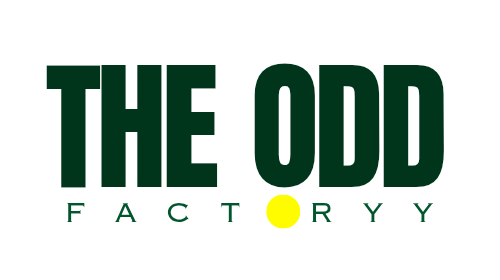In the fashion industry, sourcing high-quality fabric is the foundation of creating a successful clothing brand. A good fabric can elevate your designs, improve durability, and leave a lasting impression on your customers. Here’s an in-depth guide to help you navigate fabric sourcing, ensuring you choose the best materials for your brand.
What is Fabric Sourcing?
Fabric sourcing refers to the process of finding and procuring the right materials to bring your clothing designs to life. It involves working with fabric manufacturers, understanding the quality and specifications of fabrics, and ensuring a reliable supply chain. Fabric manufacturers in India and wholesale fabric suppliers in India offer a wide range of options, catering to different needs and budgets. From lightweight cotton to luxurious silks, the choices are endless, making it crucial to select materials that align with your brand’s vision.
Why High-Quality Fabric Matters
1. Enhances Brand Reputation
High-quality fabric ensures your clothing looks premium and lasts longer. Customers appreciate garments that retain their shape, color, and texture over time, leading to positive reviews and brand loyalty.
2. Improves Customer Satisfaction
Comfort and durability are key factors for consumers. Using quality fabrics guarantees a better fit and feel, leaving your customers delighted with their purchases.
3. Supports Sustainable Practices
Sustainable fabrics not only reduce your brand’s carbon footprint but also resonate with eco-conscious consumers. This is especially important as the demand for ethical fashion grows.
Understanding Fabric Specifications
Before sourcing fabric, it’s important to understand its specifications. These include:
- GSM (Grams per Square Meter): This indicates the fabric’s weight and thickness.
- Weave Type: Examples include plain, twill, and satin weaves, each offering different textures and strengths.
- Stretch and Recovery: Essential for activewear and fitted clothing.
- Drape and Hand Feel: Determines how the fabric flows and feels to the touch.
- Color Fastness: Ensures the fabric doesn’t fade or bleed during washing.
Types of Fabric Suppliers
When sourcing fabric, you will encounter different types of suppliers:
- Manufacturers: Direct producers of fabric, often offering bulk discounts.
- Wholesalers: Wholesale fabric suppliers in India stock a wide range of materials at competitive rates.
- Retailers: Ideal for small quantities but can be more expensive.
- Online Suppliers: Convenient and offer a diverse selection but may lack tactile evaluation.
- Local Markets: Fabric suppliers in Mumbai are renowned for their unique offerings and quick availability
Cost Management and Budgeting for Fabric Sourcing
Fabric costs can significantly impact your production budget. Here are some tips to manage costs effectively:
- Set a Budget: Define your maximum spending limit.
- Negotiate: Always negotiate with fabric suppliers for better deals.
- Buy in Bulk: Purchase in larger quantities to lower costs per unit.
- Consider Alternatives: Blends can be cost-effective without compromising on quality.
Work closely with wholesale fabric suppliers in India to achieve the best value for your investment.
Steps to Sourcing High-Quality Fabric
1. Define Your Fabric Needs
Start by identifying the type of garments you’re producing. Are you creating casual wear, formal wear, or activewear? Your fabric choice will depend on the product’s purpose, design, and target audience.
Key Factors to Consider:
- Weight: Lightweight fabrics like cotton for summer wear or heavier options like wool for winter collections.
- Texture: Soft and breathable fabrics for comfort.
- Durability: Fabrics that withstand wear and tear.
2. Research Fabric Types
Fabrics come in a wide variety, each with unique properties:
- Cotton: Soft, breathable, and ideal for casual wear.
- Linen: Lightweight and moisture-wicking, perfect for summer collections.
- Silk: Luxurious and smooth, suitable for high-end formal wear.
- Polyester: Durable and wrinkle-resistant, commonly used in activewear.
- Wool: Warm and insulating, ideal for winter garments.
- Bamboo and Tencel: Eco-friendly and soft, excellent for sustainable fashion.
Understanding the properties of different fabrics will help you choose the right material for your collection.
3. Identify Reliable Suppliers
Finding the right supplier is crucial for ensuring consistent quality. Start by researching:
- Local Suppliers: Great for quick delivery and better communication.
- International Suppliers: Offers a wider variety but requires thorough vetting.
- Trade Shows: Events like Texworld or Premiere Vision allow you to explore multiple suppliers and feel the fabrics firsthand.
4. Request Samples
Always request fabric swatches before placing a bulk order. Test the fabric for:
- Color fastness
- Shrinkage
- Stretch
- Overall feel and quality
5. Prioritize Sustainability
Opt for suppliers who offer eco-friendly and ethically sourced fabrics. Certifications like GOTS (Global Organic Textile Standard) or OEKO-TEX can assure you of their commitment to sustainability.
6. Negotiate Terms
Establish clear terms with your supplier, including:
- Minimum order quantities (MOQs)
- Delivery timelines
- Payment terms
- Quality assurance policies
7. Build Long-Term Relationships
A reliable supplier can become a valuable partner in your brand’s success. Maintain clear communication, provide feedback on fabric quality, and foster a long-term relationship to ensure a steady supply of high-quality fabric.
Tips for Sourcing High-Quality Fabric
- Visit Suppliers in Person: If possible, visit the supplier’s facility to inspect their processes and quality standards.
- Leverage Technology: Use online platforms like Alibaba or Makers Row to connect with verified suppliers.
- Stay Updated on Trends: Keep an eye on fabric trends to offer innovative and in-demand materials.
- Test Fabrics for Production: Before bulk production, run small-scale tests to ensure the fabric meets your design requirements.
Common Challenges and How to Overcome Them
1. MOQ Issues
Solution: Look for suppliers offering flexibility for startups or consider pooling orders with other brands.
2. Quality Inconsistencies
Solution: Work with suppliers who have strict quality control measures and provide guarantees.
3. Shipping Delays
Solution: Plan ahead and maintain buffer stock to avoid disruptions.
Key Considerations When Sourcing Fabric
- Supplier Reliability: Partner with fabric suppliers in Mumbai or other trusted regions known for timely delivery and quality.
- Quality Control: Request swatches or samples before placing bulk orders.
- Lead Times: Ensure suppliers can meet your production schedule.
- Scalability: As your brand grows, ensure your supplier can meet increasing demands.
- Customer Needs: Prioritize comfort, durability, and aesthetic appeal to align with your target audience.



